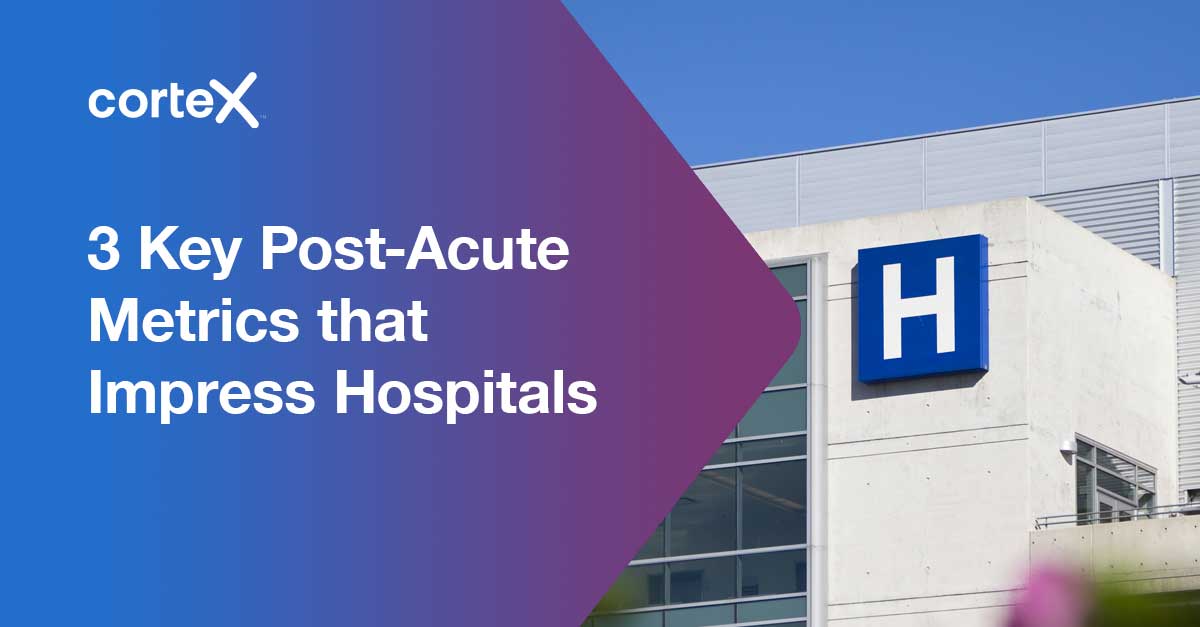Here’s what we’ve learned helping hospitals manage preferred referral networks, and helping hundreds of post-acute operations access those networks. Evaluating performance metrics that are accurate, unbiased, and current is the method most hospitals now use to make referral decisions. Post-acute operators who gather and monitor this data themselves, and have it ready to demonstrate to network partners, are ahead of the curve and sure to impress hospitals.

#1 Patient Satisfaction
This is always #1. Increasingly, hospitals expect to review this in the form of the Net Promotor Score (NPS), which is derived by asking patients the question “How likely would you be to refer us to a friend or family member?”. Hospitals do not expect to gather this data themselves—it’s the responsibility of downstream partners to gather and report on this key metric. It is critical that this metric be unbiased, which means you should NOT have your own staff asking patients this question and documenting results, which are sure to be skewed positive. Instead, consider a 3rd party survey solution, and in particular, one conducted by phone, which has higher response rates and allows patients to expand on their responses. For post-acute providers, NPS above 50 is generally acceptable, and above 70 is preferred.
#2 Readmission Rates
This is the best metric for hospitals to evaluate clinical outcomes resulting from care delivered by post-acute providers. Most hospitals rely on CMS data for this, which is always woefully out-of-date, and some take the extra step of calculating their own readmission rates in their EMR for each post-acute provider. You’re guaranteed to impress hospital partners by showing up at your next meeting with this data in hand. Equally important, you don’t want to show up uninformed and be surprised by what the hospital tells you. Many solutions are available to provide raw readmission information (e.g., health information exchanges), but most will require you to parse and analyze the raw data to calculate a readmission rate, which can be quite tricky. Some more advanced vendors will both process that raw data and also calculate real-time rates for you, which can be a huge advantage and powerful ammunition when competing to participate in preferred referral networks. These solutions provide the added benefit of notifying you whenever one of your patients returns to the hospital.
#3 Nurse Turnover
Believe it or not, hospitals have learned to use employee retention (and in particular nurse turnover) as a critical evaluation metric. Nearly every hospital case manager has been burned by sending patients to a SNF or HHA that does not have adequate staff to care for patients, which is a deal-breaker for any future referrals. Be prepared not only to share your turnover rates but also to discuss your strategies to reduce turnover and retain your best staff members. Post-acutes that demonstrate progress and higher retention rates are viewed favorably among hospitals, and this metric has received dramatically increased attention over the past year (likely due to record turnover resulting from the pandemic). Surveying employees regularly and deeply understanding the reasons people quit is a great way to get started making systemic improvements.
Are you struggling with any of these? We can help! Please see the rest of our website to learn more, or feel free to schedule a call with me below.




